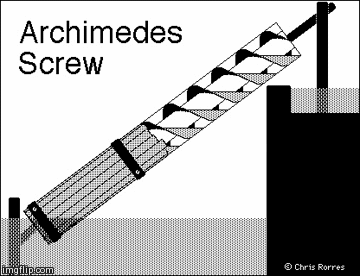Lisa M Lane, MiraCosta College (History)
When designing an online class (I’m doing one now on the History of Technology) I try to keep in mind that I have the whole web to play with.
Starting from a position of control, of knowing that I have choices of what to offer my students, is important. To me, the materials make the class, not just by providing “content”, but by creating pathways for learning.
Many years ago, I was teaching at San Elijo campus and it was the first day of a new semester. After going over the syllabus, a student asked, “What are you going to do to get me interested in history?” I responded that the materials I’ve assigned should do that, the letters and documents and readings. I explained that they had all been carefully chosen to provide a real sense of the past, and would draw him in if he’d let them. At the end of the semester, he told me he thought that was bullshit on the first day, but it turned out I was absolutely right.
Similarly, I had a student tell me that my reader was an “activist text”. It’s a collection of my favorite primary sources, so I asked him what he meant. He said every document I’d chosen somehow celebrated American citizens actively trying to change the world. I’d never thought about it, but he was right.
This is why I can’t really ever start with a textbook. I know that in some departments you have to, and I’ve been blessed that we may choose our own texts. Studies indicate that the instructor feeling in control of his/her own online class is very important. All textbooks have their own pedagogy, in the choice of material, the layout, even the questions for study. I’ve noted here that I don’t like having to go with the whole package.
My first materials, then, tend to be of my own creation. I write out (and later record) “lectures”, sharing resources along with my perspective of that particular era or subject. These lectures don’t substitute for the factual, encyclopedic information in a textbook, so more and more I’ve been turning to a brief textbook, or Wikipedia, for that. I select supporting materials that are freely available, or that I can carefully cite and use according to the TEACH Act, behind a password. I write my own introductions, so that students know what to look for.

from NYU
I look for cool things, visual things. I hunt down YouTube video clips and gif animations. I not only look for art, but have students post visual primary sources every week. So part of collecting materials is also deciding what should also be collected by the students, rather than me!
I confess that finding and creating materials is one of the best parts of teaching online. Unlike in the classroom, where I have to present things in a certain order, often while explaining, online the student can jump around amongst the resources, and go back to anything at any time. And the vast selection of materials available online makes it a voyage of discovery to develop a class.
First, I am so excited to hear that you are designing a History of Technology, definitely needed and super cool! Second, I agree about not going with a textbook Publisher’s resources, but mostly because the activities seem a lot like “busy work” and just “going through the motions”. One of my primary intentions in teaching is to help student become proactive in their own educational process. The idea of finding their own sources if fantastic, since it hits on so many objectives we want students to meet–critical evaluation of sources, analysis, and not to mention, can they actually identify a primary source!
My question for you: do you ever feel overwhelmed by the amount of material out there? While I enjoy the search– and usually have to set a time limit or else I would seriously spend my whole day researching–sometimes I feel I get lost in the amount of material.
So inspired and full of ideas now!
It is exciting! When I’m doing my own research for sources, yes, I lose track of time but I figure research is what I’m supposed to be doing, and I learn so much.
For students, I don’t think they get overwhelmed – to many of them, it’s just a Google image search for something that is in that week’s work, and only gradually do they realize they can tailor the search to their own writing. At that point, they’re doing their own research, which is exactly what I want! 🙂